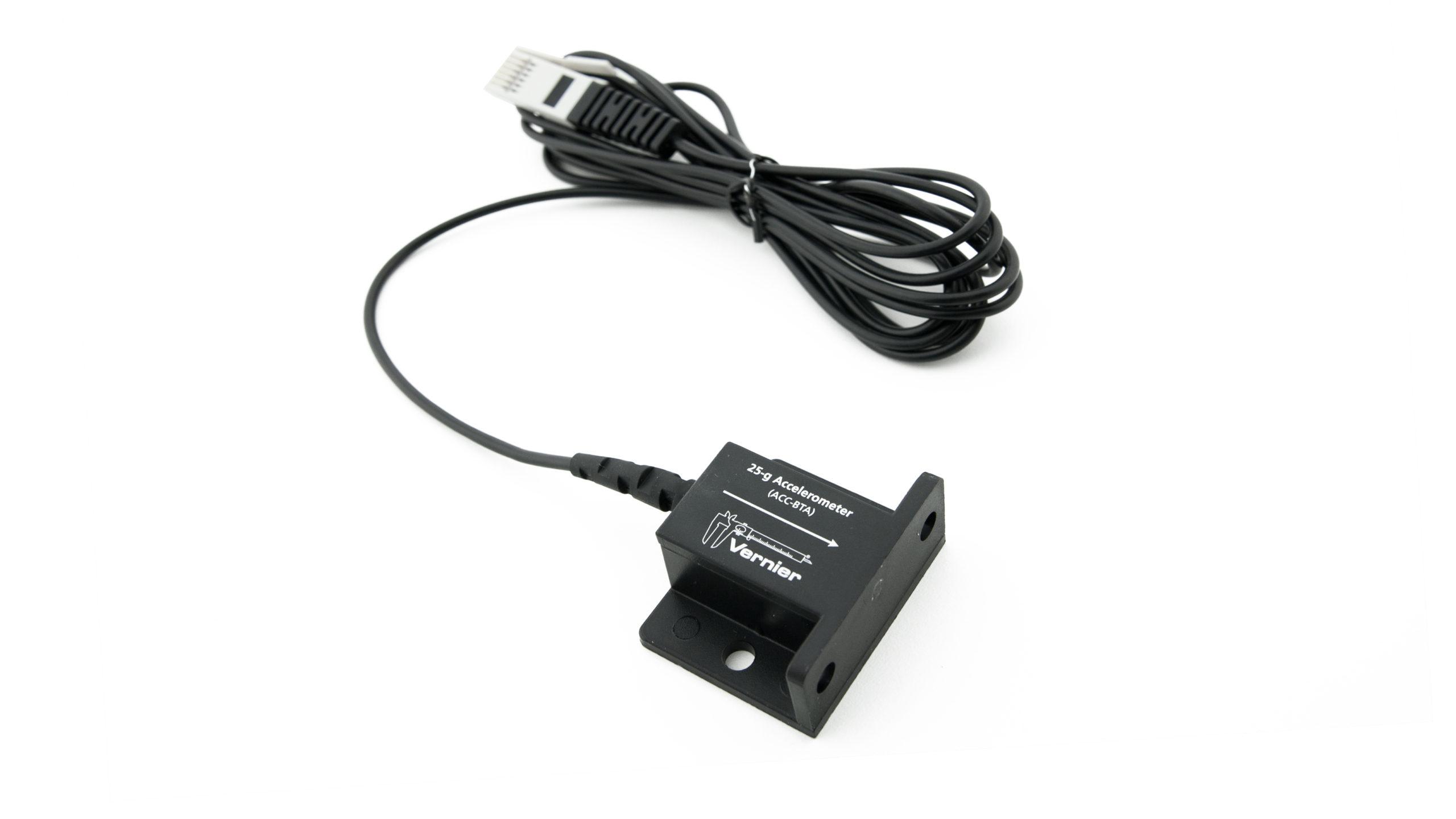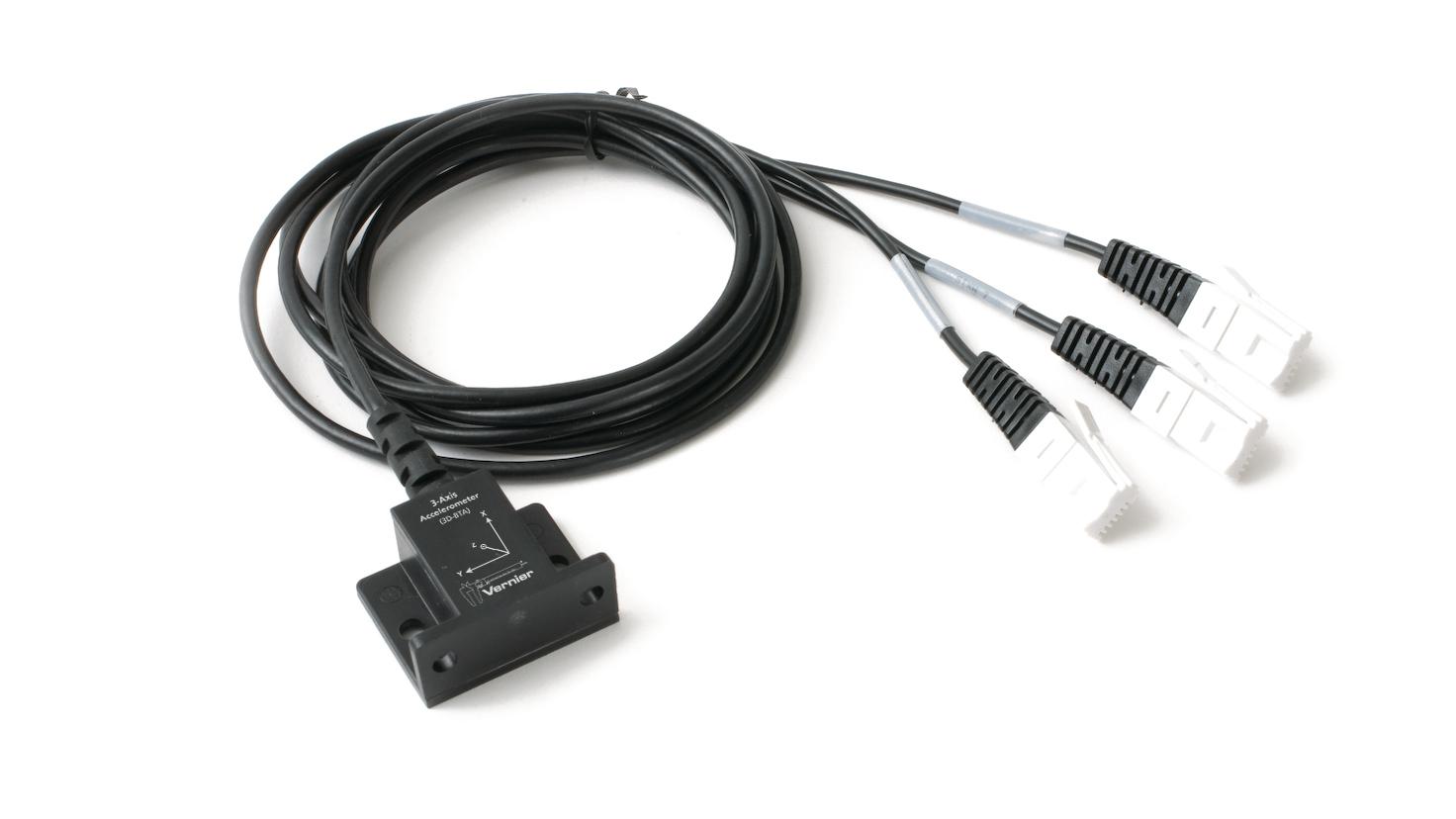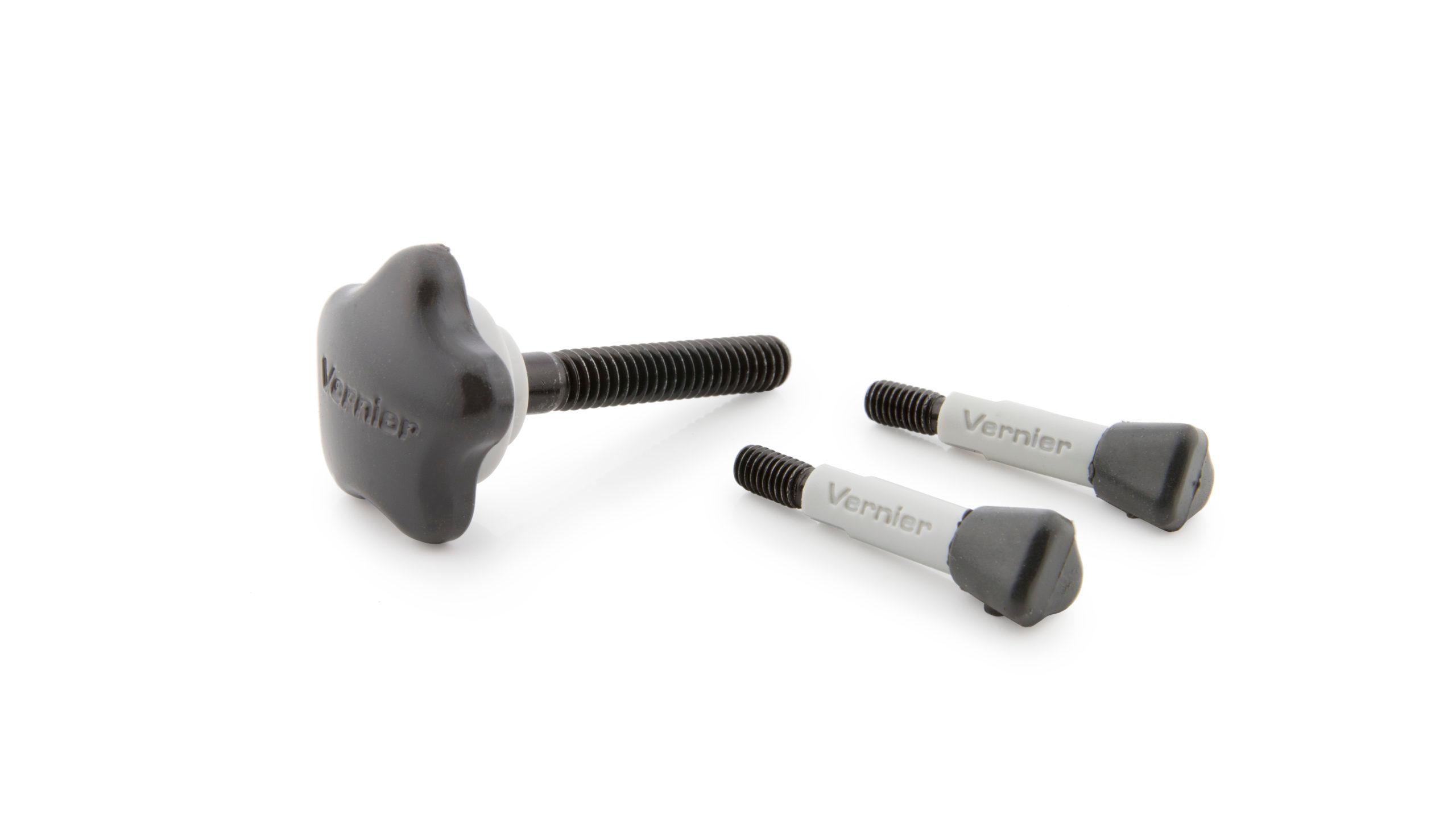25-g Accelerometer
Low-g Accelerometer
3-Axis Accelerometer
Dynamics Cart and Track System Fasteners for Force Sensor and Accelerometer
Fasteners for Dual-Range Force Sensor and Accelerometer
- Go Direct® Acceleration Sensor
- Slip it into your pocket and pirouette or ride a half-pipe. Mount this accelerometer on your bicycle or affix it to your lab cart without any dragging cables.
- https://www.vernier.com/product/go-direct-acceleration-sensor/
- 25-g Accelerometer
- The 25-g Accelerometer is great for studying large, one-dimensional accelerations such as collisions, rocket launches, or experiments with crash test dummies.
- https://www.vernier.com/product/25-g-accelerometer/
- Low-g Accelerometer
- The Low-g Accelerometer is the best choice for most acceleration experiments, including Newton's second law, simple harmonic motion, and the relationship ...
- https://www.vernier.com/product/low-g-accelerometer/
- Fasteners for Dual-Range Force Sensor and Accelerometer
- Fasteners for Dual-Range Force Sensor and Accelerometer. The Vernier Dynamics System Accessory Kit consists of two small and one large hex bolts with ...
- https://www.vernier.com/.../fasteners-for-dual-range-force-sensor-and-accel...
- Go Direct® Force and Acceleration Sensor
- The Go Direct Force and Acceleration Sensor couples a 3-axis accelerometer with a stable and accurate force sensor that measures forces as small as ±0.1 N and ...
- https://www.vernier.com/product/go-direct-force-and-acceleration-sensor/
- Dynamics Cart and Track System Fasteners for Force Sensor and ...
- Likewise, the two small thumbscrews are used to attach a Vernier Accelerometer to a DTS cart. ORDER CODE: DTS-ACC ...
- https://www.vernier.com/.../dynamics-cart-and-track-system-fasteners-for-f...
- What does an accelerometer actually measure? – Technical ...
- May 12, 2016 ... The Accelerometer reads 9.8 m/s2 when the arrow is upward and the device is at rest. By adding -9.8 m/s2, we get zero, which is the correct ...
- https://www.vernier.com/til/3706
- 3-Axis Accelerometer
- The 3-Axis Accelerometer has three separate internal accelerometers mounted orthogonally, allowing you to analyze separate components of complex accelerations.
- https://www.vernier.com/product/3-axis-accelerometer/
- Low-g Accelerometer User Manual
- The Low-g Accelerometer measures acceleration along the line marked by the arrow on the sensor. Accelerations are normally measured in either meters per second ...
- https://www.vernier.com/manuals/lga-bta/
- 25-g Accelerometer User Manual
- The accelerometer senses acceleration using an integrated circuit (IC) originally designed to control the release of air bags in an automobile. This IC is micro ...
- https://www.vernier.com/manuals/acc-bta/
- What is the difference between your accelerometers?
- This is our most versatile accelerometer. It has two ranges (±16 g and ±200 g), measures three axes of acceleration, and has a built in...
- https://www.vernier.com/til/677/
- Where is the accelerometer located inside the LabQuest 2?
- To use the internal sensors on the LabQuest 2 to make rotational physics measurements, it’s important to know where the accelerometer itself is located inside...
- https://www.vernier.com/til/2911/
- Where is the accelerometer located inside the WDSS?
- To use the internal sensors on the WDSS to make rotational physics measurements, it is important to know exactly where the accelerometer is located inside...
- https://www.vernier.com/til/3037/
- What are the dimensions of the mounting holes on the Vernier wired (BTA) accelerometers?
- There are two sets of mounting holes on the Vernier wired (BTA) accelerometers for attaching the accelerometer firmly to an experiment setup, when necessary. Each...
- https://www.vernier.com/til/4102/
- Low-g Accelerometer Troubleshooting and FAQs
- Specifications and User Guide Troubleshooting Additional Troubleshooting Specifications Calibration Calibrate? Usually, no. The sensor is individually calibrated before shipping. For many experiments, you may use...
- https://www.vernier.com/til/1410/
- How do I attach my Go Direct Accelerometer to my experimental setup?
- The comes with the following accessories to attach the sensor to our carts and other equipment. The U-bracket can also be used to attach the...
- https://www.vernier.com/til/4183/
- 3-Axis Accelerometer Troubleshooting and FAQs
- Specifications and User Guide Troubleshooting Additional Troubleshooting Specifications Calibration Calibrate? Usually, no. The sensor is individually calibrated before shipping. For some experiments, you may use...
- https://www.vernier.com/til/1412/
- How do you calibrate an accelerometer?
- Vernier accelerometers measure acceleration along the line marked by the arrow on the label. Accelerations are normally measured in either meters per second per second...
- https://www.vernier.com/til/418/
- Can I use an accelerometer to measure velocity or position?
- While the temporal integral of acceleration is velocity, and the second integral is position, it is very difficult in practice to use an accelerometer alone...
- https://www.vernier.com/til/3536/
SAVE/SHARE YOUR CART

 25-g Accelerometer
25-g Accelerometer Low-g Accelerometer
Low-g Accelerometer 3-Axis Accelerometer
3-Axis Accelerometer Dynamics Cart and Track System Fasteners for Force Sensor and Accelerometer
Dynamics Cart and Track System Fasteners for Force Sensor and Accelerometer Fasteners for Dual-Range Force Sensor and Accelerometer
Fasteners for Dual-Range Force Sensor and Accelerometer